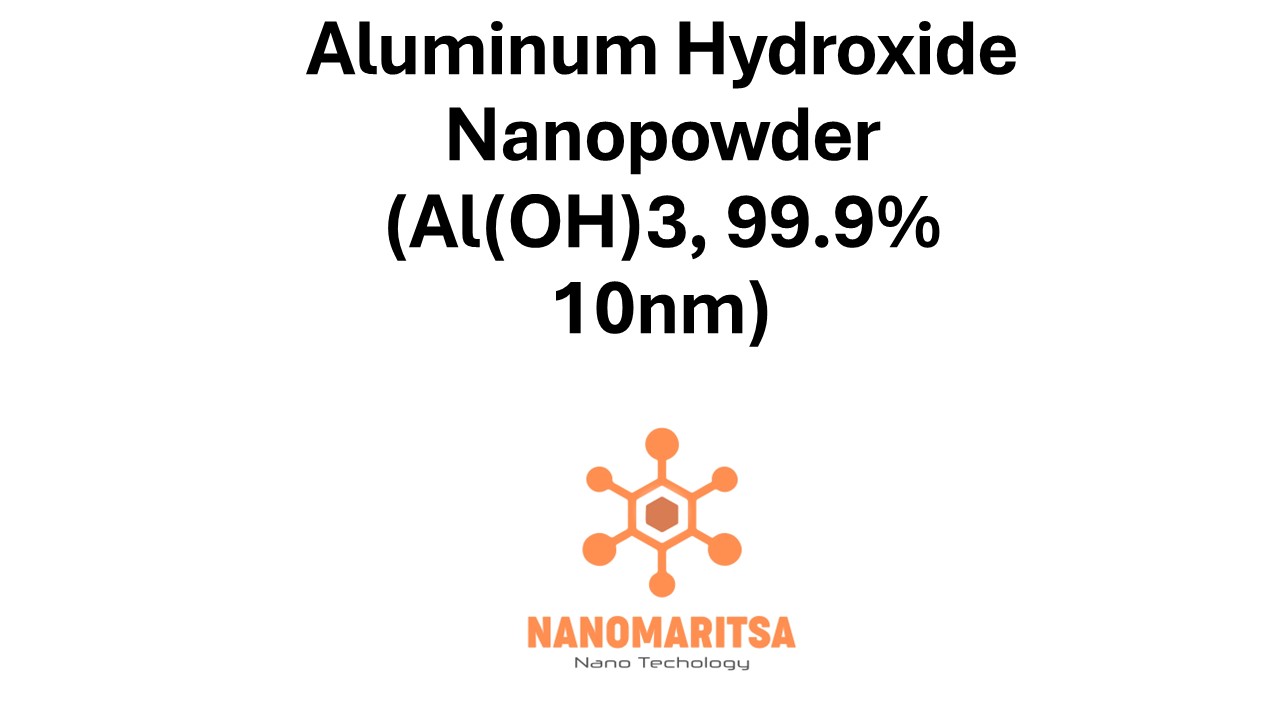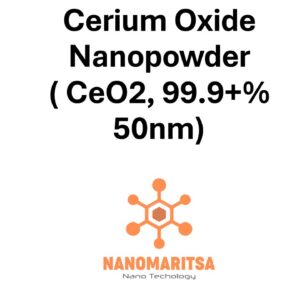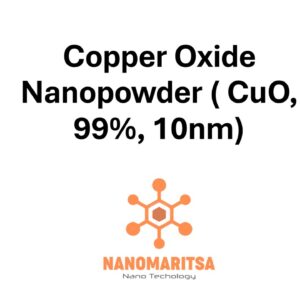Aluminum Hydroxide Nanopowder (Al(OH)3, 99.9%, 10nm)
€140.00
CompareAluminum Hydroxide Nanopowder (Al(OH)₃, 99.9%, 10nm) is a high-purity nanopowder with a particle size of approximately 10 nanometers (nm). It is a finely divided form of aluminum hydroxide, known for its high surface area, chemical stability, and versatility. With a purity of 99.9%, this material is widely used in applications where fine particle size, high reactivity, and stability are required, such as in catalysis, electronics, pharmaceuticals, and as an additive in various industrial processes.
Key Features:
- Aluminum Hydroxide (Al(OH)₃): Aluminum hydroxide is a common compound that has a variety of applications due to its chemical stability, non-toxicity, and ability to function as a flame retardant, a precursor for aluminum salts, and a mild abrasive.
- Purity (99.9%): The high purity of 99.9% ensures that the nanopowder is free of contaminants, allowing it to be used in sensitive applications where material consistency and quality are critical.
- Particle Size (10nm): The 10nm particle size significantly increases the surface area, making it highly reactive and effective in applications requiring strong interactions with other materials or surfaces.
Properties:
- High Surface Area: Due to its nanoscale size, this powder offers a much larger surface area compared to larger particles, making it highly reactive and efficient in catalytic, adsorptive, and functional applications.
- Chemical Stability: Aluminum hydroxide exhibits excellent chemical stability and resistance to corrosion, which makes it durable in various environments.
- Flame Retardant: It can be used as a flame retardant in various materials, enhancing their resistance to fire and heat.
- Non-Toxicity: Aluminum hydroxide is generally considered non-toxic, making it suitable for use in food, medical, and environmental applications.
- Hydrophilic Surface: The nanopowder’s surface is hydrophilic, which can enhance its interactions with water-based systems, such as in applications involving wet chemical processes.
Applications:
- Flame Retardants: Used in the production of flame-retardant materials, particularly in plastics, coatings, and textiles, to improve fire resistance.
- Catalysis: It serves as a catalyst support in various chemical processes, especially in the production of aluminum-based catalysts and other chemical reactions.
- Pharmaceuticals: Used in the pharmaceutical industry as an antacid and as a precursor in the manufacture of aluminum salts for use in drugs and vaccines.
- Water Purification: Used in water treatment processes due to its ability to adsorb impurities and remove heavy metals.
- Abrasives: Its fine particle size and hardness make it useful in polishing and abrasive applications, particularly in precision surface finishing.
- Additives in Composites: Enhances the properties of polymer composites, such as improved flame resistance, thermal stability, and mechanical strength.
Handling and Safety:
- Health and Safety Considerations: Avoid inhalation and prolonged skin contact. Use appropriate personal protective equipment (PPE), including gloves, goggles, and masks. Ensure good ventilation during handling.
- Storage: Store the nanopowder in a dry, cool, and well-ventilated environment. Keep containers tightly sealed to prevent contamination and moisture absorption.
- Precautions: Handle with care to avoid dust formation. Dispose of waste material in accordance with local environmental and safety regulations.
Summary:
Aluminum Hydroxide Nanopowder (Al(OH)₃, 99.9%, 10nm) offers exceptional chemical stability, high surface area, and versatility for a wide range of applications. Its high purity and small particle size enhance its effectiveness in catalysis, flame retardancy, pharmaceuticals, and other industrial applications. Proper handling and storage are essential to maintaining its quality and ensuring its optimal performance across various fields.
| Measurement (gr) | 100 grams, 500 grams, 1000 grams |
|---|
Related products
-
Single-Element Oxides Nanopowder
Aluminum Oxide Nanopowder (Al2O3, gamma, 99.99%, 5nm)
0 out of 5(0)SKU: MN09NP0205€120.00 This product has multiple variants. The options may be chosen on the product page -
Single-Element Oxides Nanopowder
Cerium Oxide Nanopowder ( CeO2, 99.9+%, 50nm)
0 out of 5(0)SKU: MN09NP0214€140.00 This product has multiple variants. The options may be chosen on the product page -
Single-Element Oxides Nanopowder
Aluminum Oxide Nanopowder (Al2O3, gamma, 99+%, 80nm)
0 out of 5(0)SKU: MN09NP0207€80.00 This product has multiple variants. The options may be chosen on the product page -
Single-Element Oxides Nanopowder
Copper Oxide Nanopowder ( CuO, 99%, 10nm)
0 out of 5(0)SKU: MN09NP0218€220.00 This product has multiple variants. The options may be chosen on the product page






